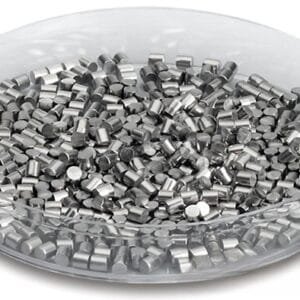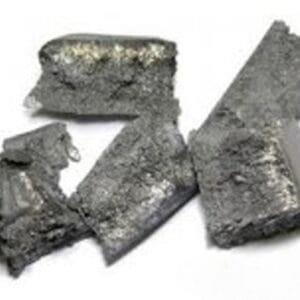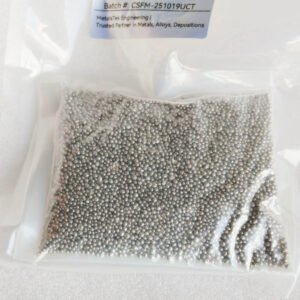CIGSS(CuInxGa1-x(Se.S)2) Pellet Evaporation Material
TFM offers high-purity CIGSS(CuInxGa1-x(Se.S)2) Pellet Evaporation Material, widely used in thin-film solar cells, optoelectronics, and semiconductor applications. This material plays a crucial role in high-efficiency photovoltaic technology, providing superior light absorption, stability, and energy conversion efficiency.
Key Features and Advantages
High Purity (99.99% – 99.999%) – Ensures optimal performance in thin-film deposition and semiconductor applications.
Superior Optical & Electrical Properties – Enhances light absorption efficiency for thin-film solar technology.
Optimized for Thin-Film Deposition – Suitable for thermal evaporation and E-beam evaporation processes.
Customizable Composition – The Cu/In/Ga ratio can be adjusted to optimize bandgap energy for different applications.
Stable & Uniform Coating – Provides consistent film quality, essential for photovoltaic device fabrication.
Applications
Thin-Film Solar Cells – A key material in next-generation flexible and lightweight solar panels.
Optoelectronic Devices – Used in photodetectors, LEDs, and advanced semiconductor technologies.
Photovoltaic Research & Development – Supports cutting-edge solar energy innovations.
Thin-Film Transistors & Sensors – Applied in wearable and transparent electronics.
Industry Impact
TFM’s CIGSS(CuInxGa1-x(Se.S)2) Pellet Evaporation Material is a high-efficiency material for photovoltaic and optoelectronic advancements. Its exceptional purity, excellent absorption properties, and optimized thin-film deposition characteristics ensure maximum energy conversion efficiency, making it an ideal choice for semiconductor and renewable energy industries.


 MSDS File
MSDS File



Reviews
There are no reviews yet.